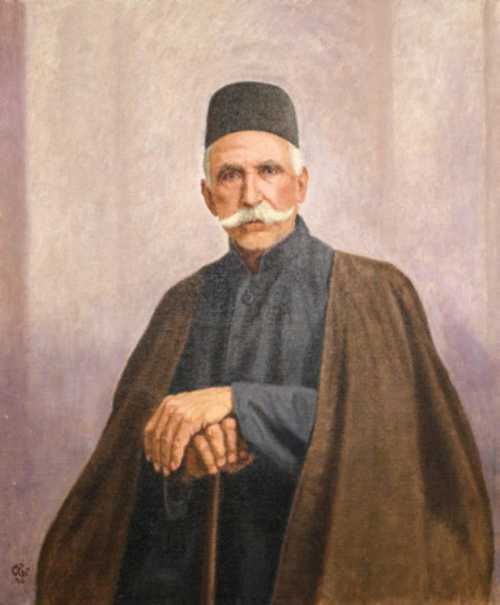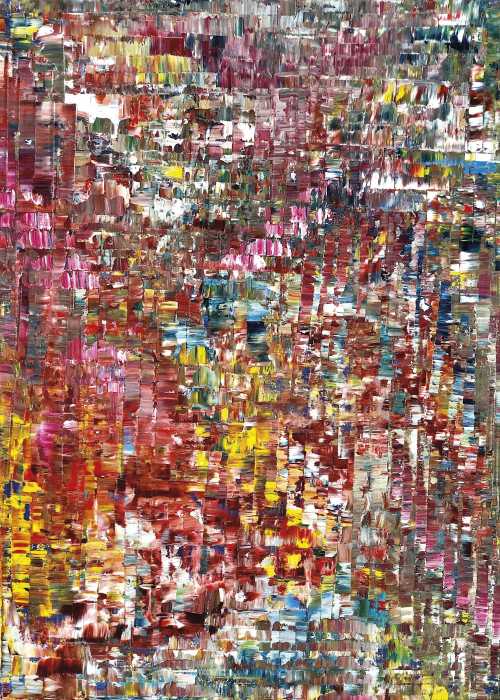- Man and his Son 1965
- Oil on canvas
- Painting
- 59.7 * 80 cm
- signed and dated in Arabic (lower right); signed and titled in Arabic and signed and dated 'SAAD ALTAI 1965' (on the reverse)
20 October 2021
Estimation
£7,000
9,671 USD
-
£10,000
13,816 USD
Realized Price
£11,875
16,406 USD
39.706%
Artwork Description
Text by Dr Ahmed Naji, independent researcher and cultural advisor on art in Iraq and the Arab world
Born in Babylon, Iraq in 1935, Al-Tai trained as an artist in Rome until 1957, when he returned to Baghdad with a Master’s degree in painting. He participated in several exhibitions in Baghdad and abroad including a recent exhibition in Amman, Jordan in 2019. Al-Tai was a member of the Iraqi Impressionists Group which he joined after returning from Rome. Despite the name of the group, Al-Tai was not categorically an impressionist, rather his style lent more towards cubist realism. For him, the colour of the painting was determined by its subject matter. As such, his Iraqi marshes period was mostly monochromatic blue, while the desert period bore beige and earthen tones.
The painting titled Man and His Son, 1965 precedes the aforementioned periods and it is clear how Al-Tai blends the landscape with the sky seamlessly. The figures are rendered in a quasi-cubist style dividing them into harmonious colour planes. This painting is an early example of Al-Tai’s style which he applied to different subject matters over the years, most notably his Fishermen and Net painting published in Jabra Ibrahim Jabra’s Grass Roots of Iraqi Art, published in 1983. The cubist foundation seen in this painting serves as the connective tissue for Al-Tai’s different subjects ranging from landscapes to human figures to architecture.
Al-Tai is an award winning artist who, amongst other things, received Italian knighthood in 2005 in recognition for his efforts in fostering Iraqi-Italian cultural dialogue including founding and heading the Italian Language Department in 2002 at the College of Languages, Baghdad University. He is an emeritus professor of art at the College of Fine Arts at Baghdad University, where one of the drawing rooms was named after him in April 2021.
Born in Babylon, Iraq in 1935, Al-Tai trained as an artist in Rome until 1957, when he returned to Baghdad with a Master’s degree in painting. He participated in several exhibitions in Baghdad and abroad including a recent exhibition in Amman, Jordan in 2019. Al-Tai was a member of the Iraqi Impressionists Group which he joined after returning from Rome. Despite the name of the group, Al-Tai was not categorically an impressionist, rather his style lent more towards cubist realism. For him, the colour of the painting was determined by its subject matter. As such, his Iraqi marshes period was mostly monochromatic blue, while the desert period bore beige and earthen tones.
The painting titled Man and His Son, 1965 precedes the aforementioned periods and it is clear how Al-Tai blends the landscape with the sky seamlessly. The figures are rendered in a quasi-cubist style dividing them into harmonious colour planes. This painting is an early example of Al-Tai’s style which he applied to different subject matters over the years, most notably his Fishermen and Net painting published in Jabra Ibrahim Jabra’s Grass Roots of Iraqi Art, published in 1983. The cubist foundation seen in this painting serves as the connective tissue for Al-Tai’s different subjects ranging from landscapes to human figures to architecture.
Al-Tai is an award winning artist who, amongst other things, received Italian knighthood in 2005 in recognition for his efforts in fostering Iraqi-Italian cultural dialogue including founding and heading the Italian Language Department in 2002 at the College of Languages, Baghdad University. He is an emeritus professor of art at the College of Fine Arts at Baghdad University, where one of the drawing rooms was named after him in April 2021.
More lots by Saad Al-Tai
No artworks
Realized Price
16,406 USD
Min Estimate
9,671 USD
Max Estimate
13,816 USD
Average Artwork Worth
+39.706%
Average Growth of Artwork Worth
Sales Performance Against Estimates
Similar Artworks

Portrait of Kamal-ol-Molk
Estimation
6,000,000,000﷼
12,000 USD
-
8,000,000,000﷼
16,000 USD
Realized Price
8,800,000,000﷼
17,600 USD
25.714%
Sale Date
Tehran
-
24 January 2024


